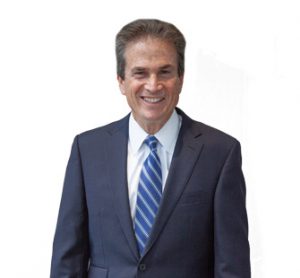Has your organization developed a strategy to prepare for the trends that can impact the senior living landscape in 2019?
If not, there could be major operational and financial implications. Workforce shortage and payment reform are two of the key issues which could radically shape the aging care continuum.
Workforce Shortage
An ongoing caregiver shortage and escalating benefit costs has been compounded over the past year by competitive labor markets. Senior living providers will continue to face enormous pressure to recruit and retain workers while staying within budgetary constraints. With the staffing dilemma growing ever more severe, it will become clear that providers need a shift in mindset when it comes to workforce. An engaged workforce is critical to increase employee retention, allowing them to enhance the level of quality, customer satisfaction, and financial performance.
To survive and become more responsive to staffing peaks and valleys, senior living providers are implementing real-time labor management systems which allow staffing to be quickly and accurately adjusted on a patient census which will become essential for managing labor costs and productivity
Another option to consider would be to share staff and centralize back-office functions, allowing care centers to focus on what they do best – high quality patient care and service.
Impact of Payment Reform
The October 2019 transition to the Patient Driven Payment Model (PDPM) will demand that providers enhance operational efficiencies and focus on healthy outcomes. The Centers for Medicare & Medicaid Services (CMS) payment reform for skilled nursing facilities (SNFs) and home health agencies (HHAs) focuses on replacing therapy-driven payment with payment that is based on patient characteristics and anticipated resource needs during a patient’s stay. PDPM assigns every resident a case-mix classification that drives the daily reimbursement rate for that individual.
PDPM will impact the delivery of therapy in the following significant ways:
- PDPM will require providers to carefully manage how to deliver services in order to provide just the right level of care for each resident. This is different from Resource Utilization Group IV, which provides incentives for high volumes of therapy to maximize payment.
- Providers can anticipate less demand for therapists in the SNF setting as a reduction in total therapy minutes provided is anticipated. This should help ease labor shortages for qualified therapy resources.
- PDPM is designed to be budget neutral for SNFs. With some therapy dollars reallocated to nursing, SNFs should be able to offset the loss in therapy reimbursement with higher reimbursement for the nursing care that’s already being provided.
With the proposed October 2019 implementation date, it’s important to start laying the groundwork now for the changes. The following are critical to success under PDPM:
- Reduce costs by having each therapist provide more treatment to more patients through the use of group and concurrent modes of treatment.
- Improve the patient outcomes by establishing data-driven protocols based on the clinical evidence to suggest a care plan that considers the reimbursement level for each patient and the outcomes model that CMS has embedded into PDPM.
- Supplement revenue sources by identifying the residents in your SNF who are not currently covered by Medicare Part A but would benefit from therapy services.
- Optimize the reimbursement by ensuring that your patients are being classified correctly and that your SNF and, by extension your therapy provider, are reimbursed appropriately for each resident that you see.
Summary
Developing an agile organization with competent employee talent will be critical with the changing demands of a senior living organization’s shift to meet the demands of today’s consumer. In addition, planning for the impact PDPM will be an essential element of a SNF’s future success.
Withum Recommendations
The above trends will impact senior living providers in 2019. We recommend you consider the following:
- Re-evaluate your current talent acquisition process.
- Implement a real-time labor management system to have the flexibility to adjust your workforce to be more efficient while meeting the health care needs of your residents.
- Implement strategies to reduce costs and optimize reimbursement under the Patient Driven Payment Model.
More on Withum’s Healthcare Services
How Can We Help?




